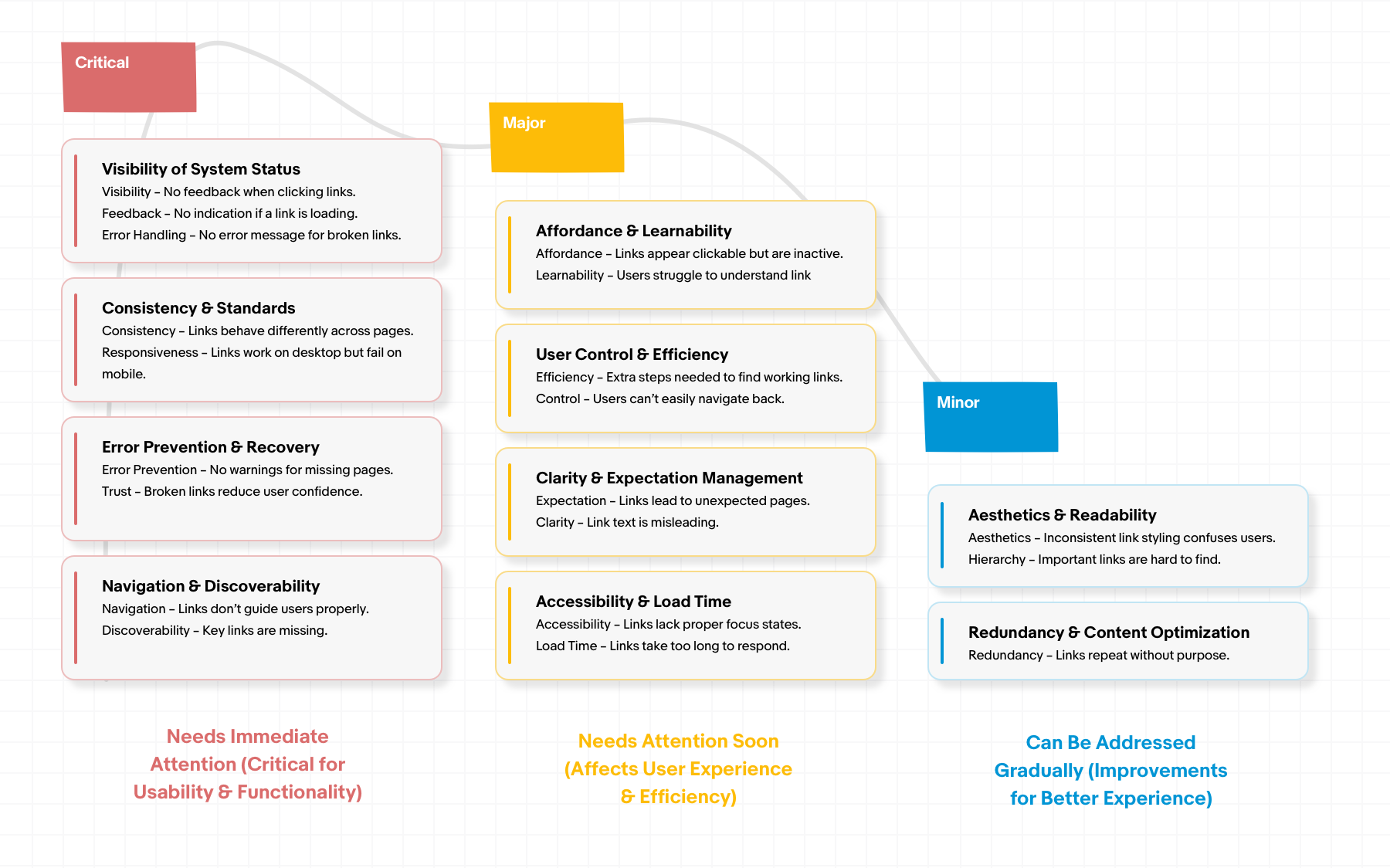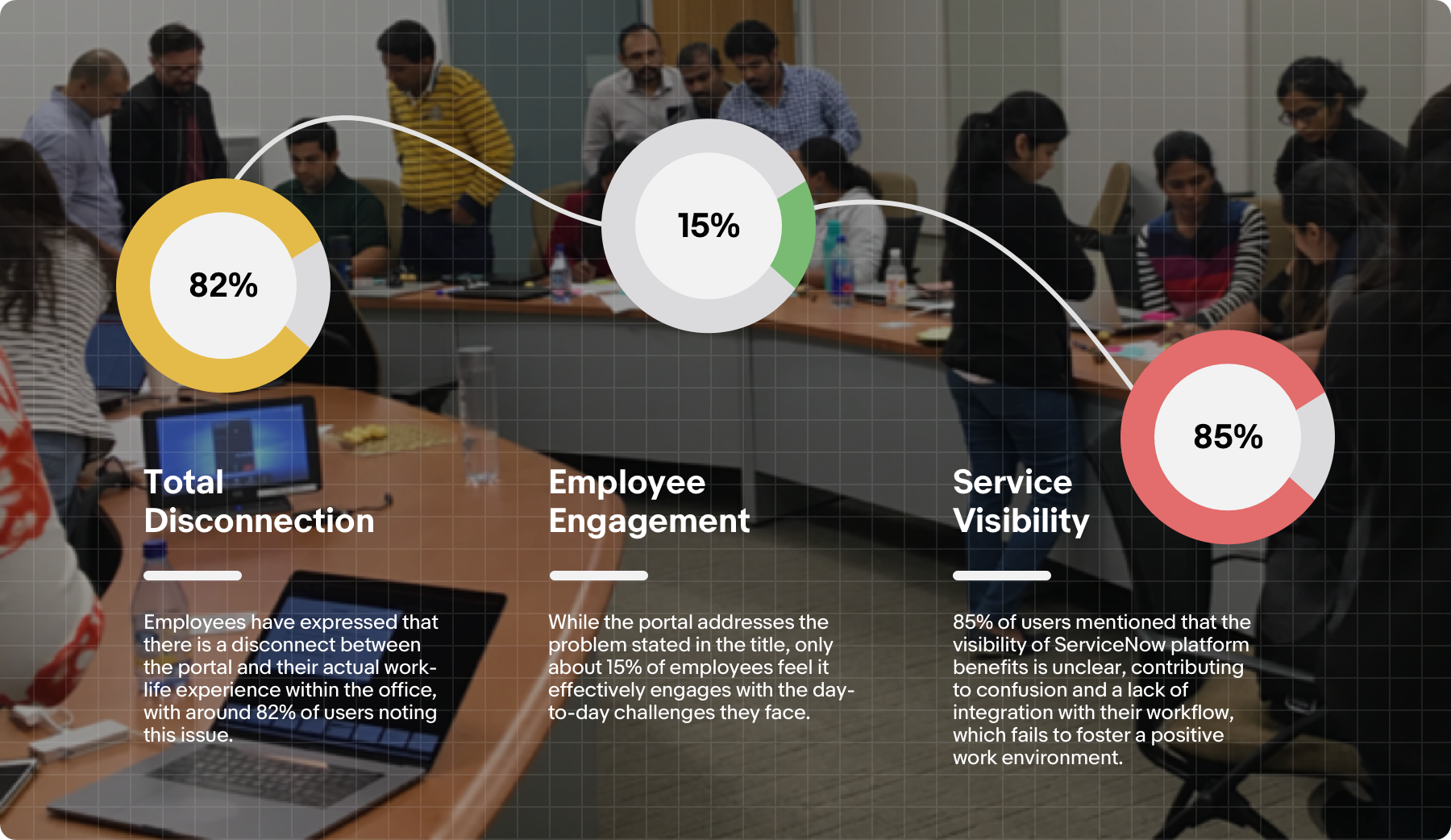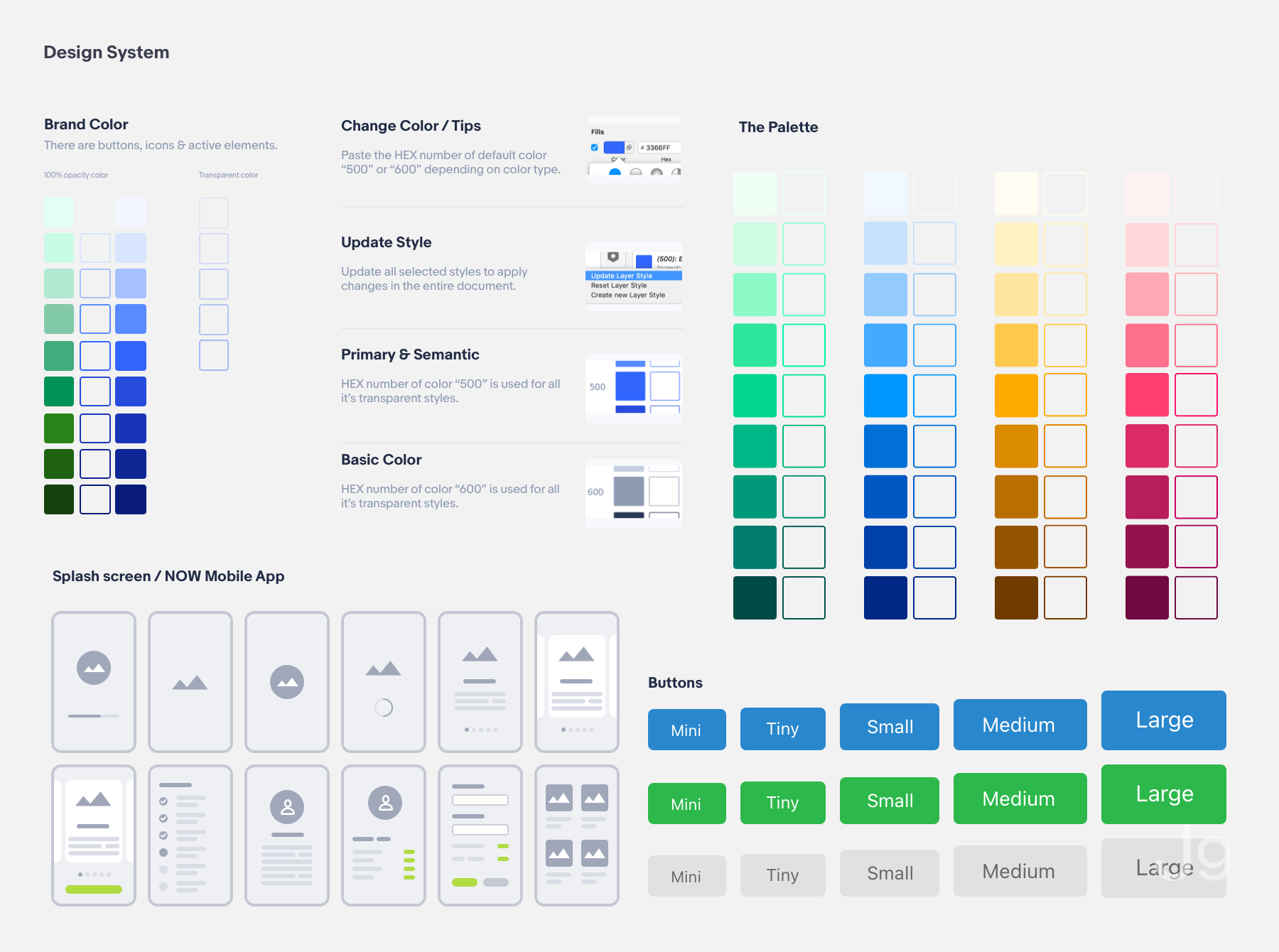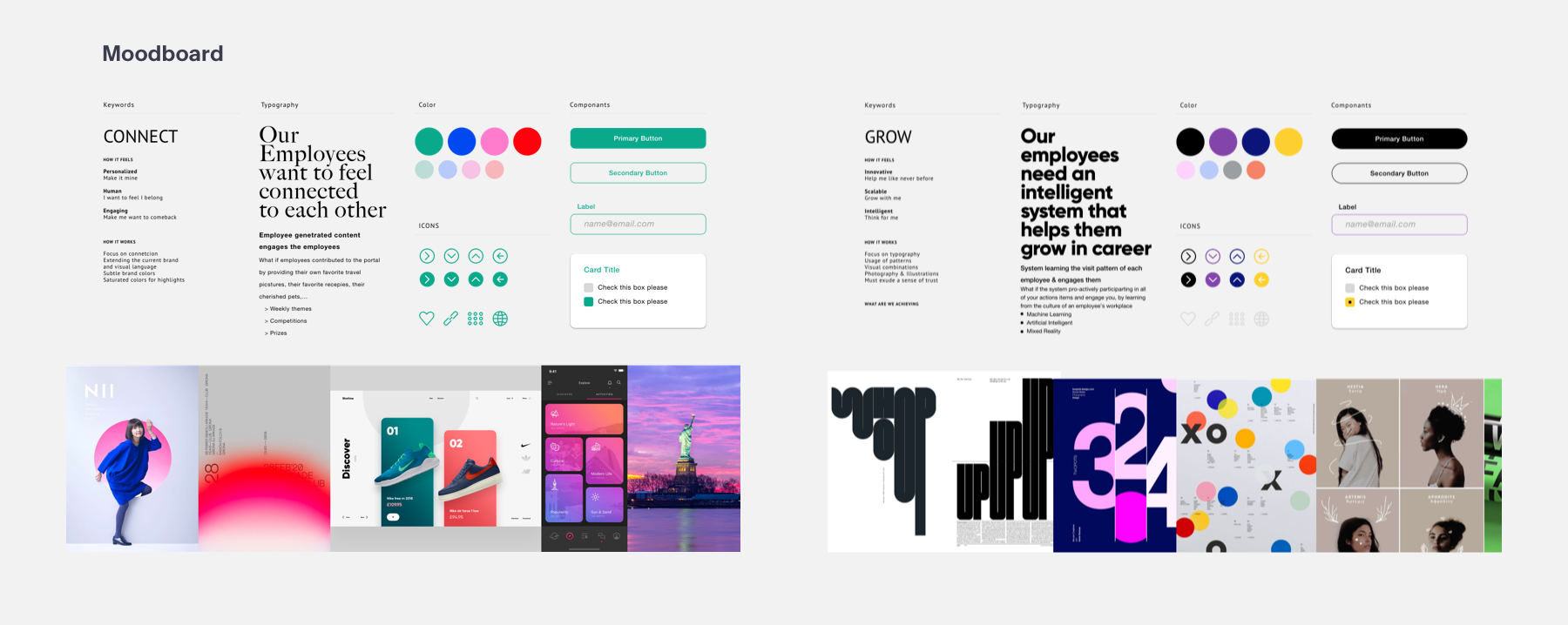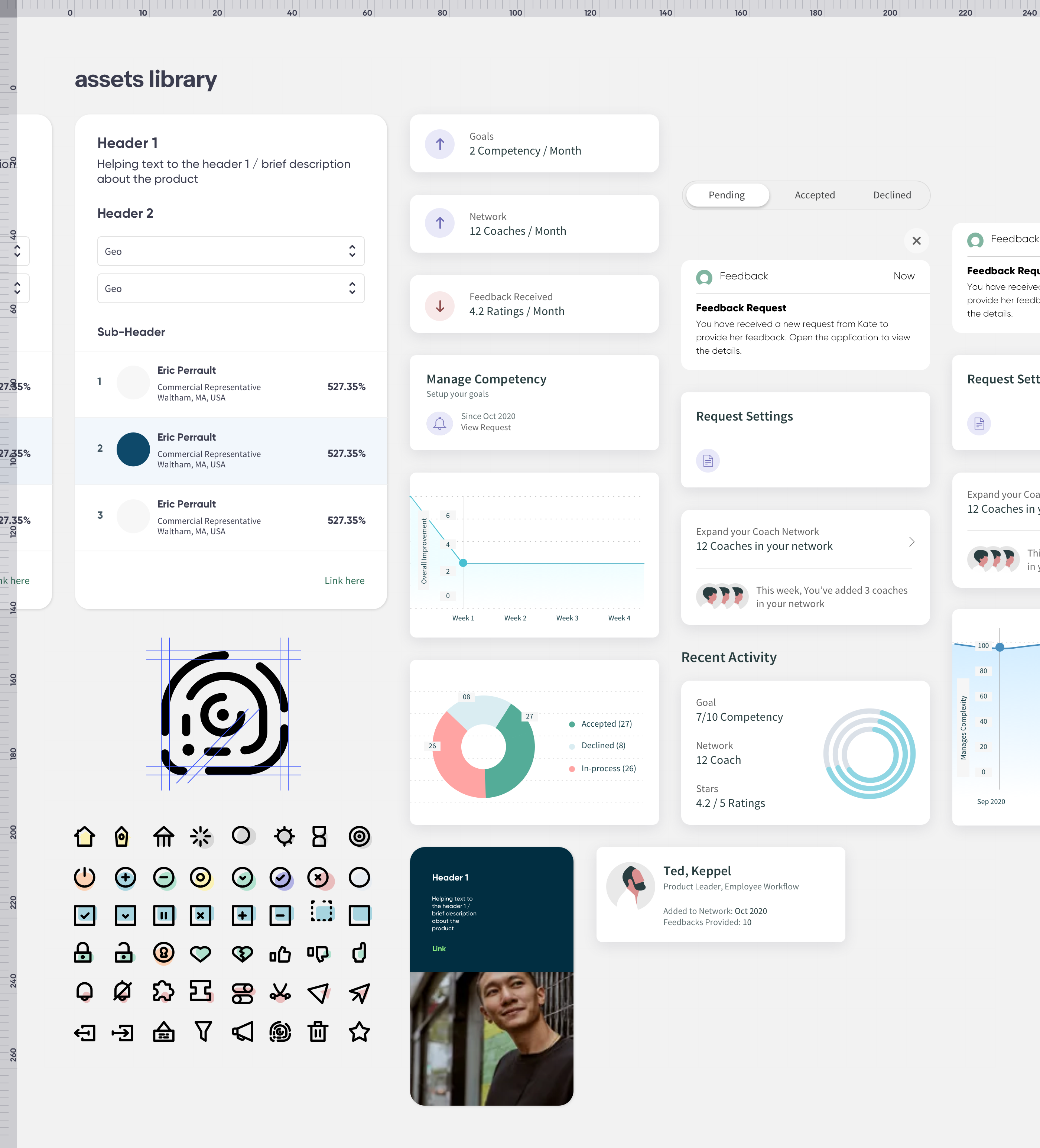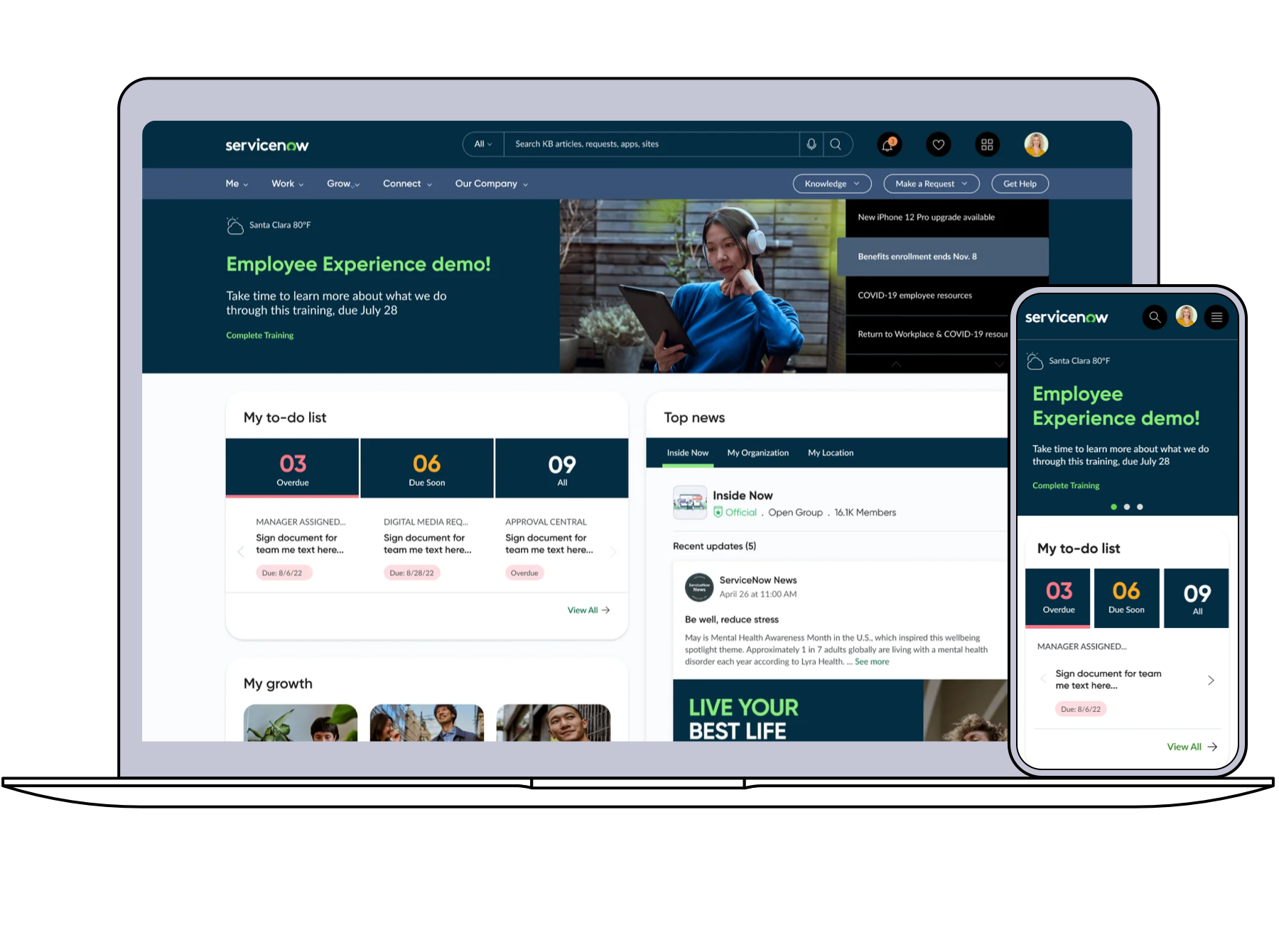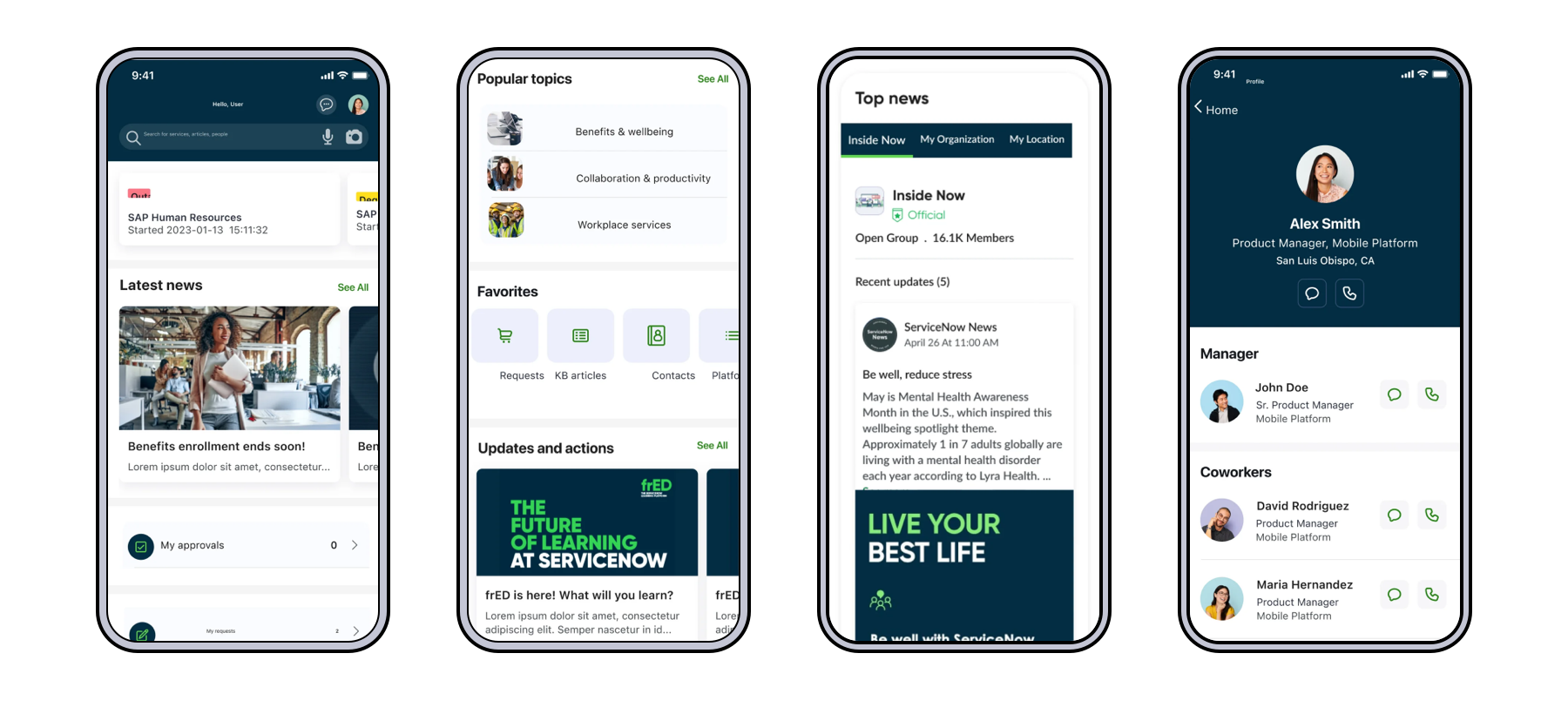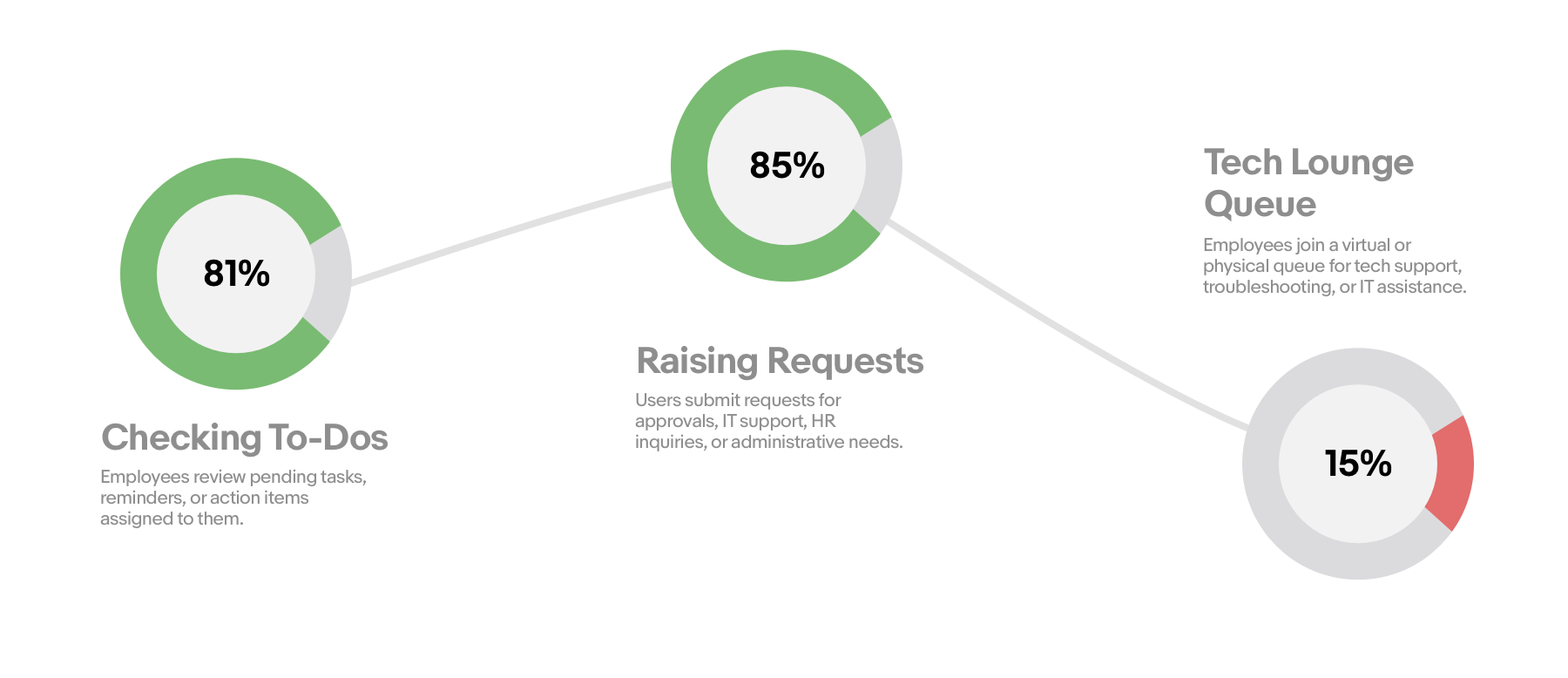Enterprise Design Thinking
ServiceNow

My Role in ServiceNow
Product Designer, User Experience Focused
I joined the ServiceNow IT team as a product designer,
one of only two designers in a team of 20+ engineers and 2
product managers. I support design across the business,
focusing on UX and UI for key parts of the platform. Over the
past year, I’ve grown significantly, achieving the following key milestones.
Working closely with a Snow Developer, our focus was on rapid
iteration and continuous learning.
I took the lead in generating prototype-ready
ideas and swiftly testing them with the team to refine and enhance our approach.
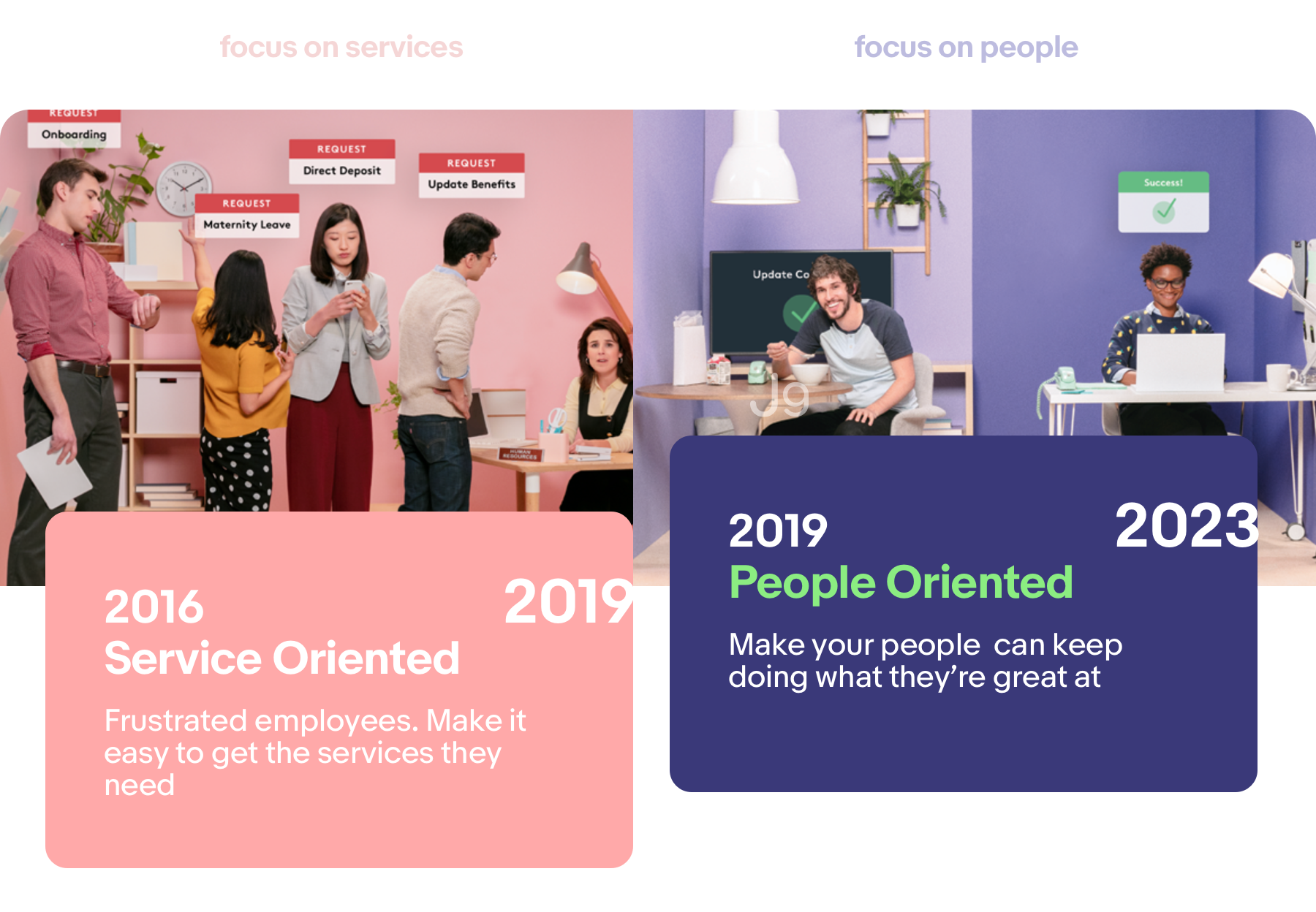
The Challenge
Lack of user-centric design
The absence of product owners led to the development
team creating the UI based solely on the framework
suggested by ServiceNow.
As a result, the employee
portal’s features were not intuitive, making it difficult
for users to access information effectively. This lack of
user-centric design contributed to low engagement and
usability issues.
By following these methodologies, I was able to create a user experience that was not only functional but also engaging, intuitive, and aligned with the needs of both users and stakeholders.
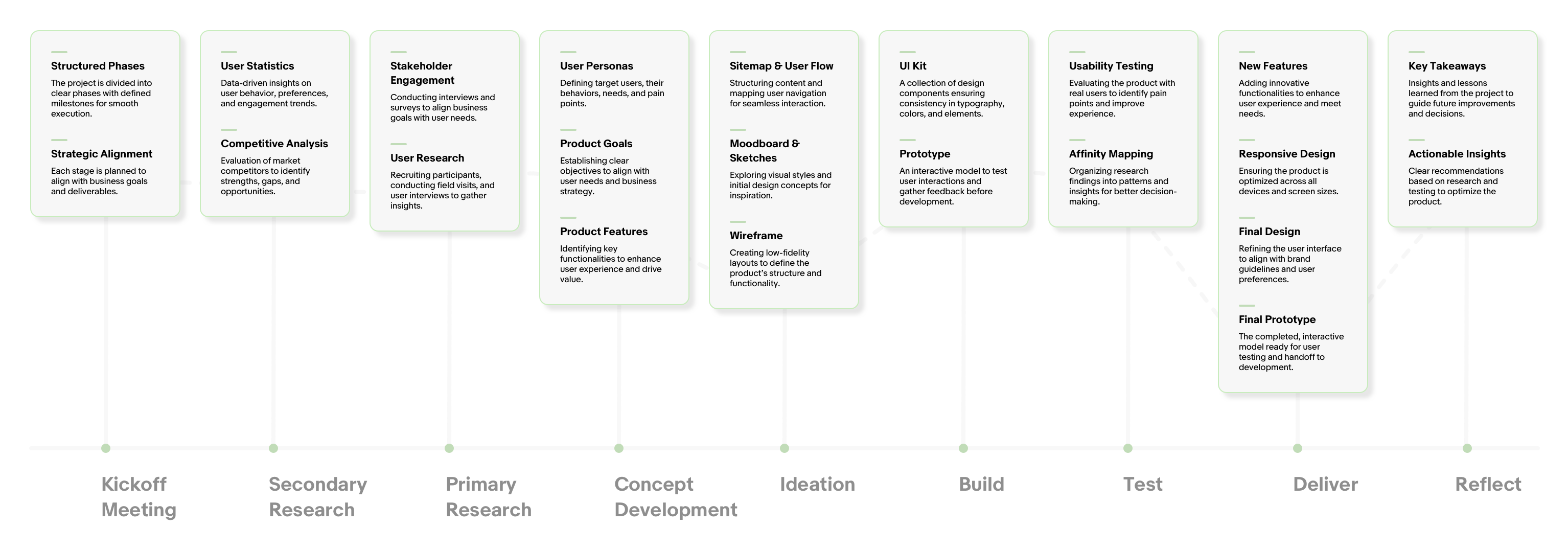
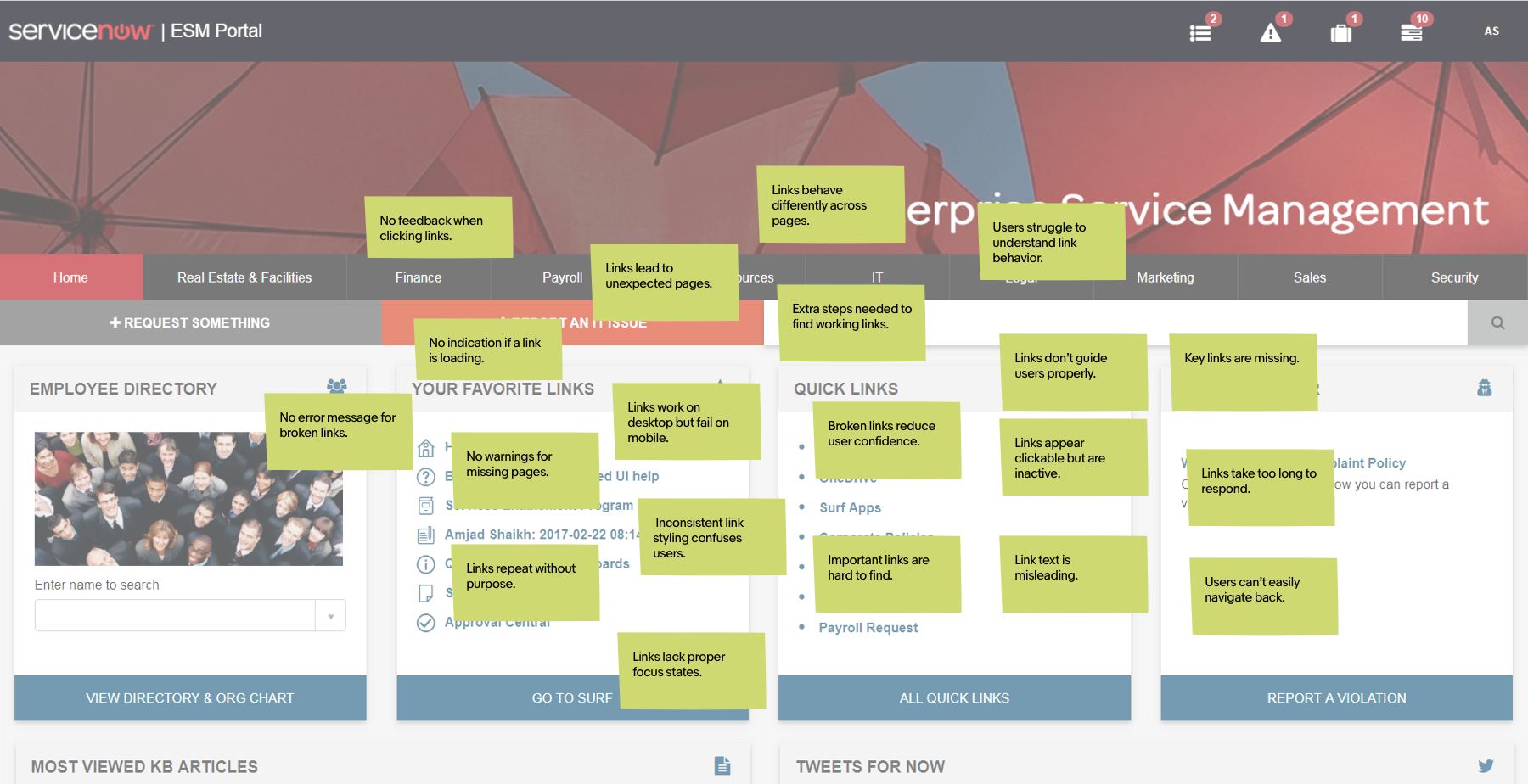
Research
Portal Observation
I conducted a thorough portal observation before
engaging with users to identify key usability
issues. Through this analysis, I categorized
the problems based on their impact on functionality,
user experience, and overall efficiency.
Using these
insights, I created a structured deck to guide user
interviews and validate findings. The compiled observations
and insights were later reviewed with stakeholders and product
owners to align on priorities and next steps for improvement.
